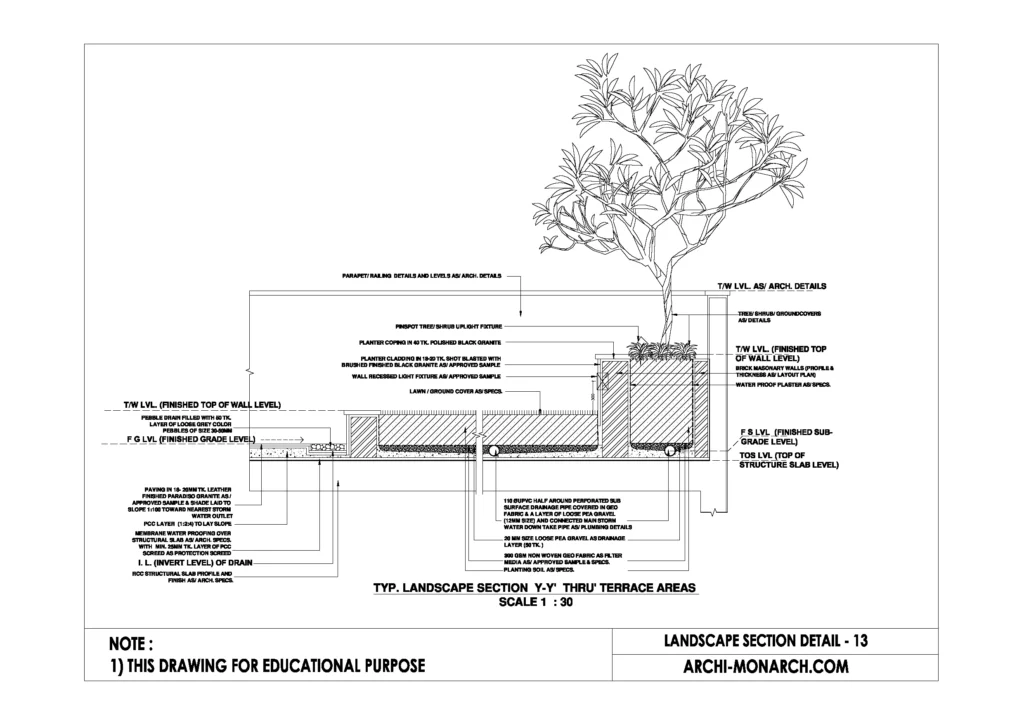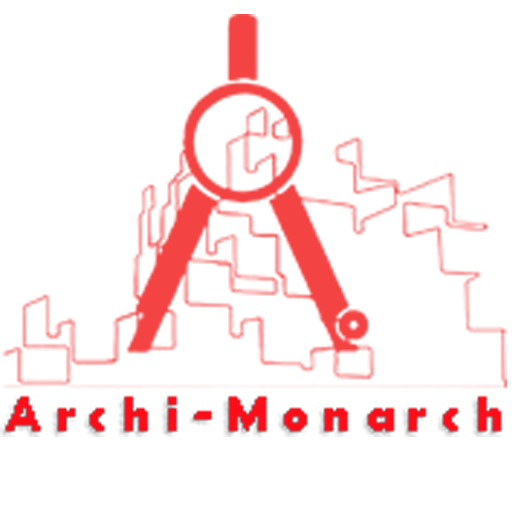If you want to know about the boundary wall detail or interior detail or miscellaneous detail, please click the link.
A landscape section is a vertical slice through the landscape that is drawn to scale, showing the topography and features of the land.
Landscape sections are often used in landscape design and planning to visualize how the land will look and how different features will fit together.
They can also be used in geology and civil engineering to understand the underlying geology and topography of an area. Landscape sections can be created using surveying equipment and software, or by hand using maps and other data sources.
Image of landscape sections detail and downloadable (in DWG) link below

Landscape section detail drawing – 13
A landscape section detail drawing is a detailed drawing of a specific feature or element in a landscape section. This could be a feature such as a retaining wall, a tree, or a water feature.
Landscape section detail drawings are used to show the exact dimensions, materials, and other details of the feature being represented. They are typically used in conjunction with a larger landscape section drawing to provide a more complete understanding of the design and layout of the landscape.
Landscape section detail drawings are often used in the construction and landscaping industries to ensure that features are built to the correct specifications.
Here are a few more things to consider when creating a landscape section:
- Scale: Landscape sections are typically drawn to scale, meaning that the dimensions of the features in the drawing are proportional to their real-world dimensions. This allows designers and contractors to accurately understand the size and layout of the features in the landscape.
- Contours: Landscape sections often include contour lines, which show the elevation of the land at different points. These can help visualize the topography of the land and understand how water will flow through the landscape.
- Materials: Landscape sections should specify the materials that will be used for different features in the landscape. This could include things like the type of soil, plants, paving materials, and other elements.
- Lighting and irrigation: Landscape sections should also consider lighting and irrigation systems, as these will play a significant role in the design and maintenance of the landscape.
- Viewpoints: Landscape sections can be viewed from different angles, such as from above (a bird’s-eye view) or from the side (a profile view). This can help understand how the landscape will look and function from different perspectives.
Our tips to help you improve your landscape section detailing.
